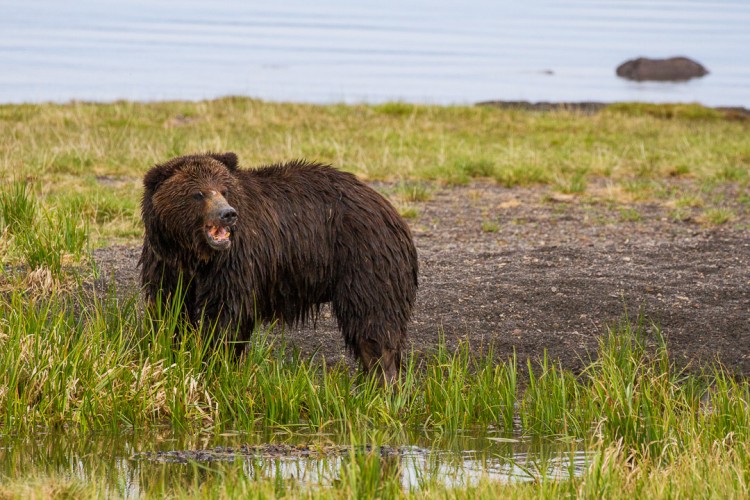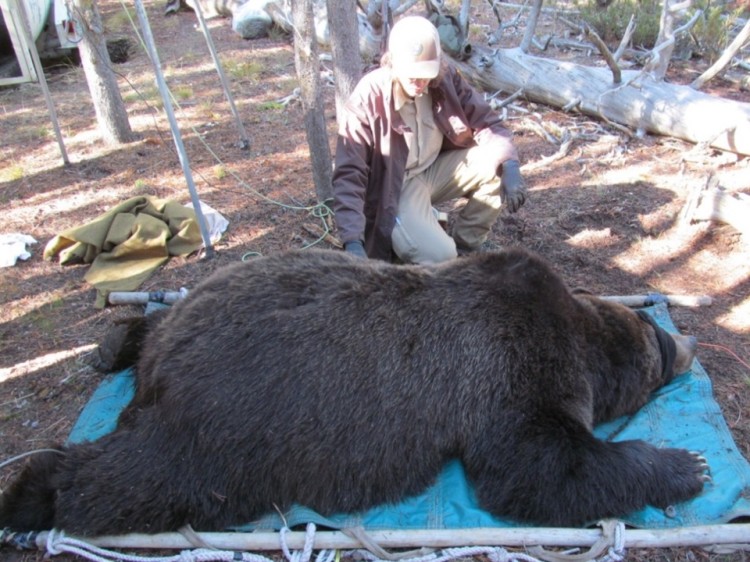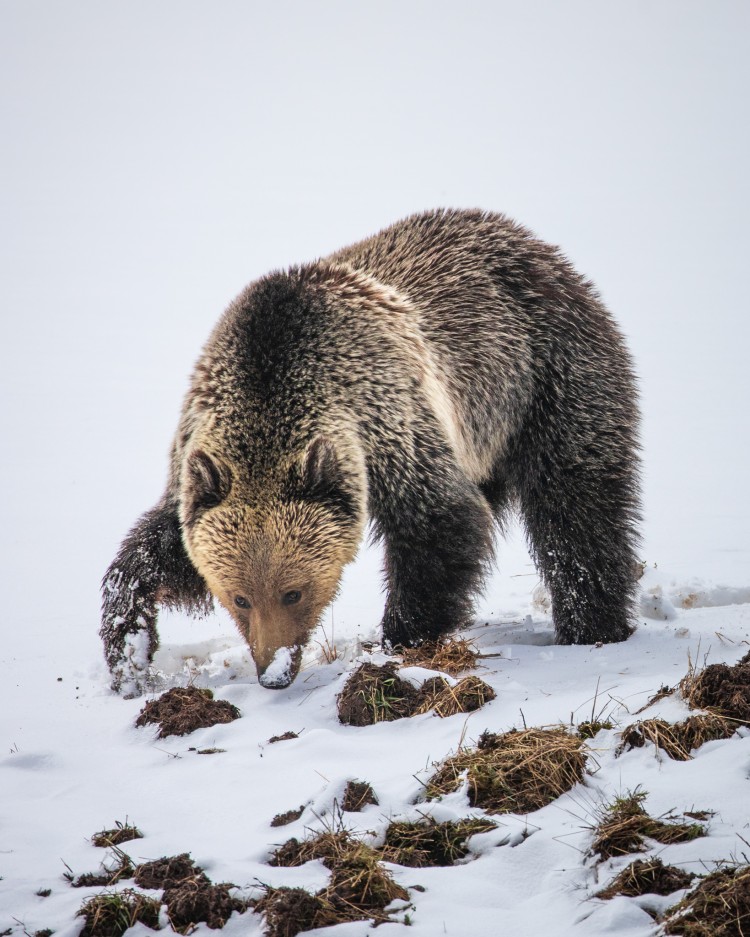Research Revealed: Yellowstone’s Second Heaviest Grizzly

712 pounds. That’s how much Grizzly 566, a 19-year-old male grizzly bear, weighed when he was trapped on October 15th by the Interagency Grizzly Bear Study Team for a bear monitoring study. The heaviest grizzly bear ever recorded in Yellowstone–another male–weighed just three pounds more, and that was back in 1977.

A tranquilized Grizzly 566 during his October capture and weigh-in. Photo courtesy of C. Whitman/U.S. Geological Survey/IGBST.
Grizzly 566 was last trapped in 2013, at age 9. Then, he weighed only 381 pounds, which was on par with his 2010 weight of 393 pounds. The massive boar (a term to describe male grizzly bears) was trapped at the end of a highly productive summer for plants, and 60% of the diet of grizzly bears in the Greater Yellowstone Ecosystem is plants–175 plant species, to be exact! So, there was no shortage of food for Grizzly 566 this spring, summer, and fall, enabling him to bulk up to this impressive size.
Interestingly, male grizzlies don’t reach their peak body size until they are 14 years old, making the results of Grizzly 566’s weigh-in somewhat expected. The reason for this is due to mating: males need to continue to grow since a larger size makes them more competitive for breeding opportunities. Female grizzly bears, or sows, reach peak size around age 9, when they redirect their energy investments into reproduction.
How big do grizzly bears get, anyway? Is Grizzly 566 really an anomaly? The answer to the latter question is no, but he is at the very upper end of a grizzly’s weight range. Grizzlies in the Greater Yellowstone Ecosystem average between 300-700 pounds (136-318 kg) for males and 200-400 pounds (91-181 kg) for females. In Alaska, where fatty and nutrient-dense salmon is readily available, grizzlies can weigh as much as 1,200 pounds (540 kg).
Grizzly 566’s heft will serve him well during next spring’s mating season. Biologists measured his body fat at 41% of his bodyweight–11% higher than the male average–meaning he will have plenty of energy reserves to both get through the long winter and dedicate to mating opportunities rather than to foraging. April and May are when boars experience a huge loss in body mass due to pursuing mating rather than searching for food, but it looks like Grizzly 566 won’t have much to worry about.

A grizzly digs for food in the snow. Photo by ETA Naturalist Rafael Sandoval.
Grizzlies are remarkably adaptable when it comes to food. They are opportunistic omnivores, meaning they eat just about anything when the opportunity presents itself. Despite the decline in whitebark pine, cutthroat trout, and even some ungulate populations–all popular grizzly food sources–biologists have not seen a change in the rate of fat accumulation on these ursine predators. This bodes well for the future of a species that is still in recovery in a rapidly changing climate.
We wish Grizzly 566 great success for his upcoming mating season! May other grizzlies be faring even half as well as him.













